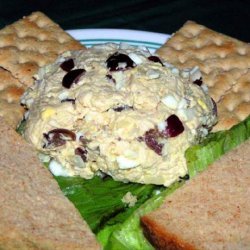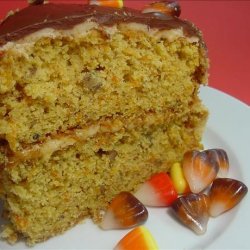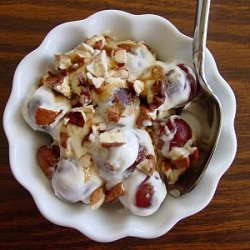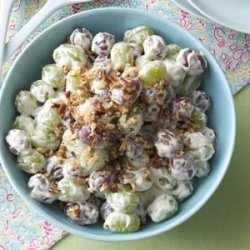Ingredients:
- directions
- marinate the grapes in 2 tbsp of vino cotto add the sugar to the grapes and vino cotto and mix really well together.
- transfer to a flat flame proof dish and place just under the grill for about 10 minutes at 250cup or until slightly
Directions:
- Saba, sapa, mosto cotto, vino cotto...
- Sapa – also called saba – is made by slowly cooking the must of red grapes (Montepulciano - Sangiovese) and white grapes (Verdicchio - Maceratino - Malvasia - Trebbiano). According to tradition, open copper kettles are used for the long cooking process. The thick sweet syrup that has a slightly acidic caramel flavor is then placed in wooden barrels to age for at least 10-12 months. During this time, the crystallized sugars from the cooking process settle to the bottom of the barrels allowing the syrup to be carefully removed. It is interesting to note that only 16-18 liters of premium quality sapa are obtained from 100 liters of grape must.
- From the most ancient times, grape juice was of great importance. It was essentially the only sweetener readily available, aside from honey. The ancient Greeks used several variations of sweet grape juice, differentiated by the degree to which they were boiled down or concentrated.
- The Romans followed suit, with their own spate of similar grape sweeteners boiled down to various consistencies. There was caroenum, which was actually boiled down wine, and sapa or defrutum, which was concentrated grape must. According to Horace, there is even evidence that the juice of certain grapes was considered better for boiling than others, namely that of the Chian variety.
- Both Greeks and Romans used must and its boiled down syrup to sweeten all manner of dishes. The Roman chef Apicius used boiled grape must in cheese sauce for lettuce and sauce for boiled turnips; as an addition to barley soups and a seasoning in luscious game and poultry dishes, such as duck cooked with prunes and chicken cooked with leeks and herbs. It was also used as a sweetener proper in a whole range of both Greek and Roman pastries, sweet breads and cheese-filled desserts.
Nutrition Facts
| Amount Per 1 Serving | |||
| Calories | 101.17 Kcal (424 kJ) | ||
| Calories from fat | 0 Kcal | ||
| % Daily Value* | |||
| Total Fat | 0g | 0% | |
|---|---|---|---|
| Sodium | 3.77mg | 0% | |
| Potassium | 238.45mg | 5% | |
| Total Carbs | 26.12g | 9% | |
| Sugars | 23.34g | 93% | |
| Dietary Fiber | 1.22g | 5% | |
| Protein | 1.22g | 2% | |
| Vitamin C | 4.1mg | 7% | |
| Calcium | 18mg | 2% | |
| Amount Per 100 g | |||
| Calories | 80.1 Kcal (335 kJ) | ||
| Calories from fat | 0 Kcal | ||
| % Daily Value* | |||
| Total Fat | 0g | 0% | |
|---|---|---|---|
| Sodium | 2.99mg | 0% | |
| Potassium | 188.79mg | 5% | |
| Total Carbs | 20.68g | 9% | |
| Sugars | 18.48g | 93% | |
| Dietary Fiber | 0.96g | 5% | |
| Protein | 0.96g | 2% | |
| Vitamin C | 3.3mg | 7% | |
| Calcium | 14.2mg | 2% | |
* Percent Daily Values are based on a 2000 calorie diet. Your daily values may be higher or lower depending on your calorie needs.
Find out how many calories should you eat.
Get Your Recipe of Health!
Follow RecipeOfHealth on Facebook!





















